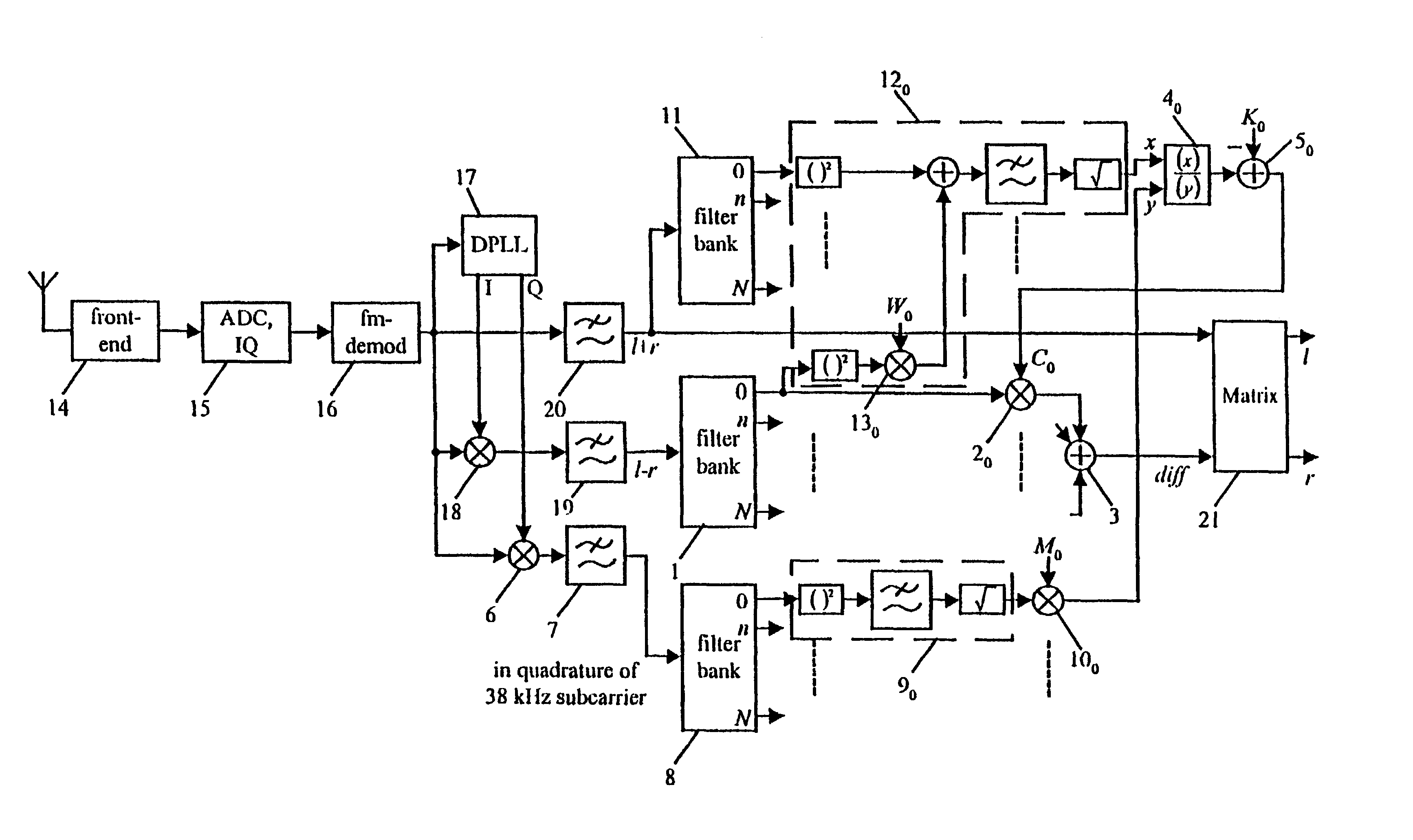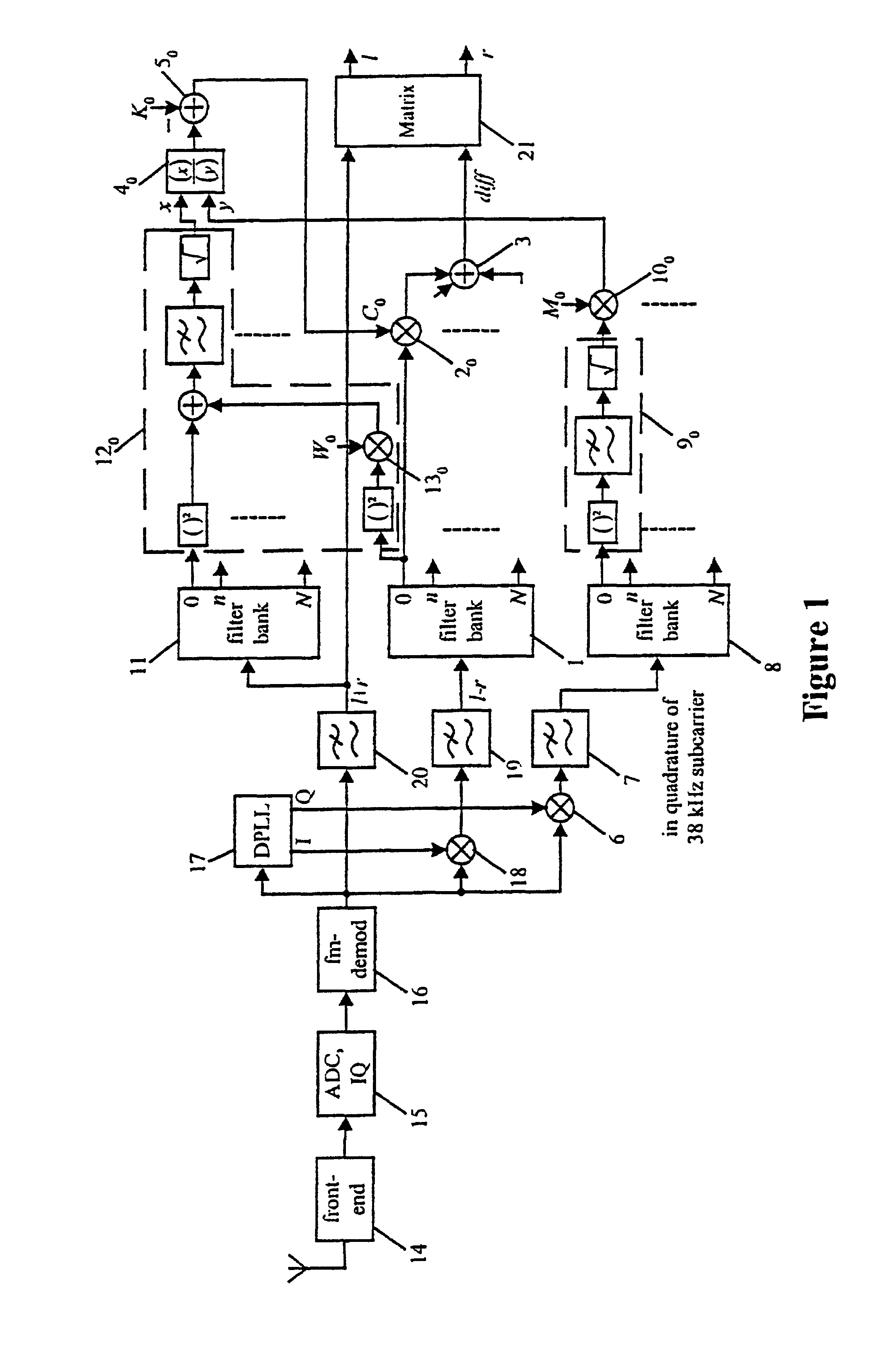Noise reduction in a stereo receiver
a stereo receiver and noise reduction technology, applied in the field of noise reduction in stereo receivers, can solve the problems of unwanted reduction of channel separation in many cases, poor reception situation, etc., and achieve the effect of reducing the effect of modulation, reducing the influence of noise in the audio signal power, and reducing the noise power
- Summary
- Abstract
- Description
- Claims
- Application Information
AI Technical Summary
Benefits of technology
Problems solved by technology
Method used
Image
Examples
Embodiment Construction
[0030]FIG. 1 depicts a digital receiver for FM broadcast with the psychoacoustically motivated stereo to mono blending according to the present invention.
[0031]A received stereo broadcast signal passes through a front end stage 14, an analogue to digital converter with IQ generator 15 to be supplied to a FM-demodulator 16 which outputs the stereo multiplex signal which spectrum is shown in FIG. 4. This stereo multiplex signal is supplied to a lowpass filter 20 which outputs the stereo sum signal, i.e. the signal 1+r, to a matrix circuit 21 which also receives the filtered stereo difference signal diff to output the signal for the left channel 1 and the output signal for the right channel r.
[0032]The stereo multiplex signal output from the FM-demodulator 16 is further input to the digital phase locked loop circuit (PLL) 17 which outputs an I signal which is in phase to the 38 kHz subcarrier to a second mixer 18 which additionally receives the stereo multiplex signal to demodulate the...
PUM
 Login to View More
Login to View More Abstract
Description
Claims
Application Information
 Login to View More
Login to View More - R&D
- Intellectual Property
- Life Sciences
- Materials
- Tech Scout
- Unparalleled Data Quality
- Higher Quality Content
- 60% Fewer Hallucinations
Browse by: Latest US Patents, China's latest patents, Technical Efficacy Thesaurus, Application Domain, Technology Topic, Popular Technical Reports.
© 2025 PatSnap. All rights reserved.Legal|Privacy policy|Modern Slavery Act Transparency Statement|Sitemap|About US| Contact US: help@patsnap.com



